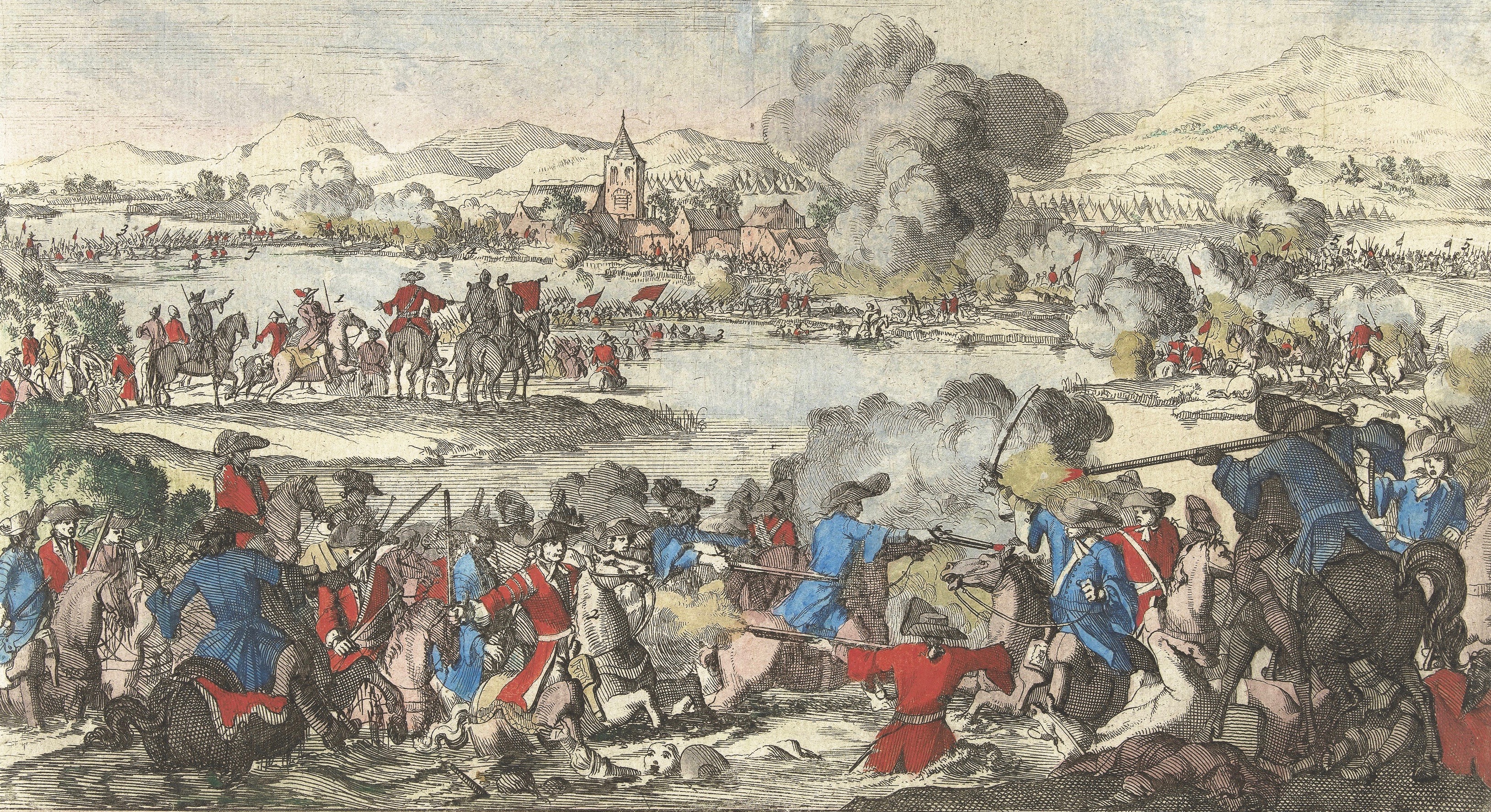Fought on July 1, 1690, just north of Dublin, the Battle of the Boyne was among the most significant battles in the long, religiously charged struggle between England and Ireland. Its aftereffects linger these 300-plus years later, notably in the Brexit dispute between Britain and the European Union (EU).
After the Glorious Revolution of 1688 Parliament deposed James II of England and Ireland and VII of Scotland (who had sought to bring back Roman Catholicism to the British Isles) in favor of James’ daughter Mary and her Dutch husband, William, Prince of Orange (both Protestants). In April 1689 at Westminster Abbey the latter were crowned Queen Mary II of England, Scotland and Ireland and King William III of England and Ireland and II of Scotland.
James, meanwhile, had fled to France to plot his return to the throne. With support from his cousin King Louis XIV he landed with a small Anglo-French army in Kinsale, southern Ireland, on March 12, 1689. He was well received by the largely Catholic south, which had raised an army to support his restoration. William reacted proportionately. On August 13 an army of English, Scottish, Dutch and Danish troops landed at Bangor Bay in Protestant northern Ireland. Commanding the force was 74-year-old Friedrich Hermann von Schomberg, regarded as one of the greatest soldiers of the 17th century. The German-born Duke of Schomberg had been a marshal of France and commander of the armies of Brandenburg. He quickly occupied Belfast and secured a firm foothold in northern Ireland.
On June 14, 1690, William III landed at Carrickfergus with some 16,000 fresh troops, determined to take Dublin and resolve the crisis in Ireland. Assuming command with Schomberg as his second, he pushed south with a combined army of 36,000. James and his Jacobite forces, numbering about 23,500, moved north and entrenched along the south bank of the Boyne River, the only defensible line north of the city. Most of William’s troops were armed with the latest flintlock muskets, while the Jacobites were largely armed with obsolete matchlocks and woefully short of artillery.
William’s army reached the Boyne on June 29. The next day William was slightly wounded while reconnoitering fords along the river. On the morning of July 1 he sent about a quarter of his force under Schomberg’s son Meinhardt to conduct a feint to the west, opposite Roughgrange. James sent almost half his own forces and most of his meager artillery to block a crossing. Schomberg himself then directed William’s main attack in the center, across the ford at Oldbridge. By midday the veteran commander and his staff had crossed the river at Grove Island. Once on the south bank Schomberg, who had opted not to wear his protective cuirass, directed the deployment of the crossing troops. As William’s infantry formed up on the south bank, a Jacobite cavalry force broke through, spearheaded by James’ Life Guards under the exiled king’s illegitimate son James FitzJames, Duke of Berwick. After receiving two glancing sword blows to the head, Schomberg was struck in the back of the neck by a close-range carbine shot and instantly killed. Most of his staff died with him.
Despite the death of their second-in-command, the Williamites ultimately took the field at Boyne. William subsequently took Dublin, forcing a Jacobite withdrawal to Limerick. Soon thereafter James again fled to France, never to return to Britain, though it took William until October 1691 to secure all of Ireland. James’ relative weakness in artillery had proven critical to his defeat. When he’d first landed in Ireland, he’d fielded ample cannons. He was critically short of money, however, and forced to melt down guns to mint debased shillings made of bronze. (Real shillings were silver, and coin collectors refer to the Jacobite coins as “gun money.”)
Each July 12 Protestant residents of present-day Northern Ireland mark the Glorious Revolution and William’s victory over James with Orangeman’s Day, aka “The Twelfth,” centered on large parades in Ulster Province, a celebration many Catholics deem offensive and one that often sparks violence. Meanwhile, one of the biggest stumbling blocks over Brexit (Britain’s exit from the EU) is the issue of a “hard border” between the Republic of Ireland, which would remain an EU member, and Northern Ireland, which as part of the United Kingdom would leave the EU.
The battlefield on the Boyne is well preserved and marked, boasting an excellent visitor center and museum. A memorial stone marks the spot where Schomberg reportedly fell, while his remains are interred in Dublin’s Anglican/Protestant St. Patrick’s Cathedral.

